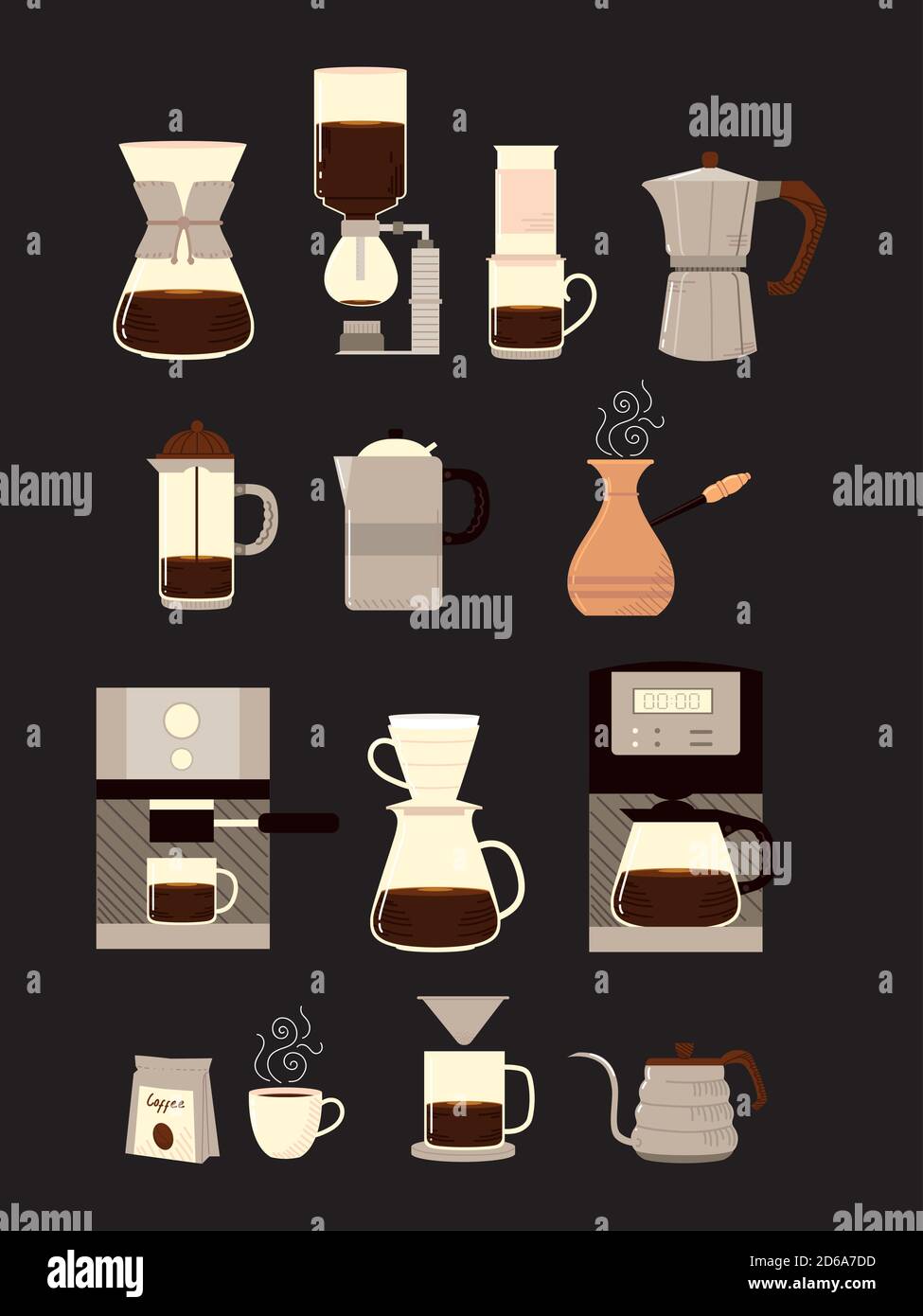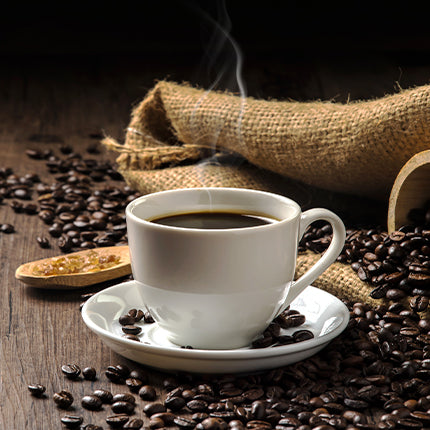The Science Behind Coffee Brewing: How Temperature Level and Time Affect Your Drink
Comprehending the scientific research behind coffee developing exposes that temperature and time are not simple variables however essential aspects that dictate the beverage's flavor account and total top quality. The ideal brewing temperature generally falls in between 195 ° F and 205 ° F, while the period of removal varies significantly throughout various techniques. This interplay of factors can cause a mug that is either disappointing or fascinating. As we check out the nuances of these elements, the inquiry develops: how can one effectively equilibrium temperature and time to achieve that excellent brew?
The Chemistry of Coffee Removal
The chemistry of coffee extraction looks into the intricate procedures that transform raw coffee beans into the fragrant beverage appreciated worldwide. This change largely includes the solubility of numerous compounds existing in the beans, which are affected by elements such as work size, water high quality, and the developing method utilized.
Throughout the brewing process, warm water acts as a solvent, removing soluble compounds, consisting of high levels of caffeine, sugars, lipids, and acids, from the coffee grounds. Each substance adds to the flavor account, fragrance, and body of the final beverage. For example, acids are accountable for bright and appetizing notes, while oils contribute to a rich mouthfeel.
The extraction procedure is not consistent; various substances liquify at different rates. The initial stages of brewing essence acids and sugars, bring about a pleasant acidity, while prolonged extraction can result in resentment as a result of over-extraction of unwanted substances. Understanding these chemical interactions is essential for enhancing brewing methods, as the balance between extraction time and water temperature can considerably influence the overall quality of the coffee. Ultimately, mastering the chemistry of coffee extraction is key to achieving a all-around and tasty cup.
Ideal Developing Temperatures
Locating the best brewing temperature level is crucial for unlocking the full potential of coffee tastes and fragrances - coffee brewing methods. Research study suggests that the optimum range for developing coffee exists between 195 ° F to 205 ° F(90 ° C to 96 ° C) Within this array, the extraction process properly dissolves the desirable soluble substances in coffee beans, leading to a well balanced and delicious cup
Developing at lower temperature levels, such as below 195 ° F(90 ° C ), might lead to under-extraction, generating an acidic and weak brew with soft tastes. On the other hand, brewing at temperatures exceeding 205 ° F(96 ° C) can cause over-extraction, producing a severe and bitter preference due to the too much dissolution of undesirable substances, such as tannins.
Moreover, the suitable brewing temperature level can differ depending upon the coffee bean kind and roast level. Lighter roasts commonly profit from slightly higher temperature levels to boost their complex flavor profiles, while darker roasts might be much better matched to lower temperatures to minimize bitterness.
Inevitably, keeping accuracy in developing temperature levels is essential for accomplishing a harmonious balance of flavors, guaranteeing that every cup of coffee provides a gratifying sensory experience.
Effect of Brewing Time
Brewing time plays a critical function in identifying the taste profile and overall high quality of coffee. The removal process, which influences the taste, aroma, and body of the drink, is greatly reliant on how much time the coffee premises are in call with water. Much shorter developing times can lead to under-extraction, causing a weak or sour flavor, as not enough soluble compounds are liquified. Alternatively, extended brewing can result in over-extraction, where undesirable substances are launched, leading to a bitter or astringent preference.
Optimal developing time differs depending on the approach utilized and the grind dimension of the coffee. A French press commonly needs about 4 minutes, while coffee extraction is normally completed within 25 to 30 secs. It is necessary to adjust brewing time in combination with other variables, such as water temperature level and coffee-to-water ratio, to attain the desired taste profile.
Comprehending the impact of developing time makes it possible for coffee lovers to improve their brewing strategies, ultimately improving the sensory experience of their mug (coffee brewing methods). With cautious focus to this variable, one can unlock the complete possibility of the coffee, revealing its special characteristics and subtleties
Developing Methods and Their Impacts

For instance, methods like French press and cold brew enable a longer steeping time, leading to a fuller body and robust flavor because of boosted removal of oils and soluble solids. Alternatively, coffee developing makes use of high stress and a much shorter removal time, generating a focused shot that stresses extreme tastes and an abundant crema.
Pour-over methods, such as Chemex or V60, use a more controlled extraction process, allowing the maker to adjust circulation price and water distribution, which can enhance brightness and clarity. Meanwhile, percolation approaches cycle water via the coffee premises several times, resulting in a stronger, frequently bitter flavor.
Last but not least, using paper filters versus steel filters can also impact the last taste; paper filters usually yield a cleaner mug by capturing oils and fine fragments, while steel filters enable more oils to travel through, adding to a fuller mouthfeel - coffee brewing methods. Understanding these subtleties can raise the coffee experience considerably
Tips for Developing Your Brew
A well-executed brew can change even the easiest coffee right our website into an amazing experience. To accomplish this, focus to detail is essential. Beginning with premium, fresh roasted beans, as their flavor profile lessens over time. Grind the beans right before making to make best use of quality, making certain the grind size matches your developing approach-- coarser for French press and finer for espresso.
Water top quality plays a vital function; use filteringed system water without impurities. The perfect developing temperature level ranges in between 195 ° F and 205 ° F(90 ° C to 96 ° C ) Too hot can blister the coffee, while too amazing may under-extract flavors.
Timing is equally vital. For immersion approaches, soaking for 3 to five mins is optimum, whereas drip methods typically take around 5 mins. Trying out mixture times to locate your recommended stamina.

Verdict
In recap, the complex partnership in between temperature level and time is vital in the coffee developing process. Understanding these scientific concepts encourages people to refine their developing strategies, ultimately leading to a much more delightful and well balanced coffee experience.
Recognizing the science behind coffee developing discloses that temperature and time are not mere variables yet critical components that dictate the beverage's flavor profile and general quality. navigate here Understanding these chemical communications is critical for optimizing developing strategies, as the balance between removal time and water temperature can dramatically affect the total high quality of the coffee.Developing time plays an essential function in establishing the flavor account and general high quality of coffee. By focusing on these aspects-- bean quality, grind dimension, water temperature level, steeping time, and proportion-- you can raise your coffee brewing process, resulting in a regularly exceptional mug.
In recap, the elaborate relationship in between temperature and time is vital in the coffee brewing process.